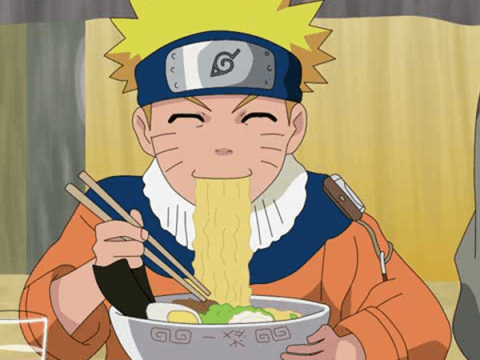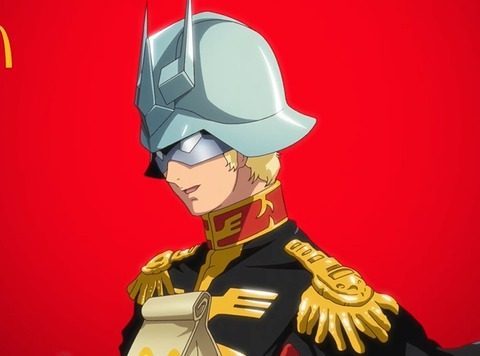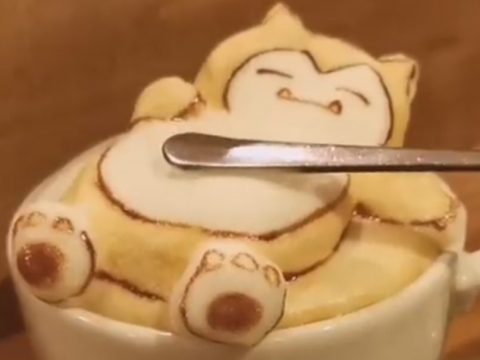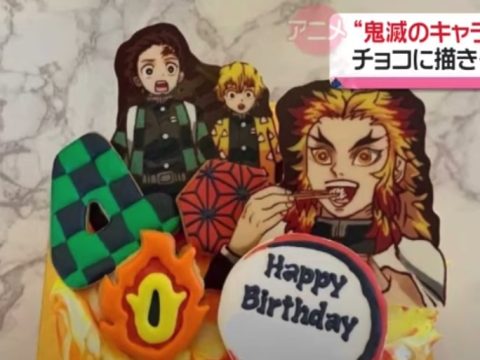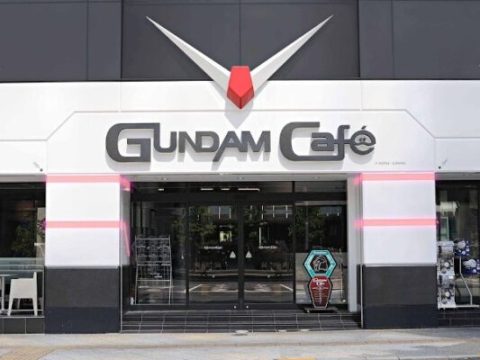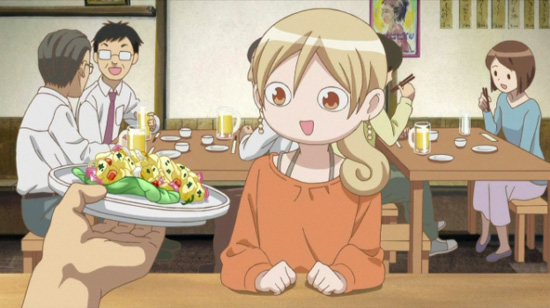
Wakako-zake adapts random, stand-alone chapters from Chie Shinkyu’s ongoing manga of the same name, which depict Wakako Murasaki during her after-work indulgences at various izakayas. Normally a two-minute anime that literally consists of, in its entirety, a 26-year-old eating a meal and drinking a beverage would be unfathomable as the chimerical Anime of the Year, but Wakako-zake, despite a mid-season simulcast pickup (Thanks, Crunchyroll!), has garnered overwhelming praise from a much larger audience than I, for one, ever expected. But what makes this short so appetizing? For starters, it’s simply a feel-good show.
Escapism through food—the extravagant focus on gratification from each morsel and each sip as well as their pairing—woven throughout is not directly a result of the portrayal of the dishes themselves. Fully photorealistic representations are not as present in the anime as they are in the source material. (They come close but are just cartoony enough to 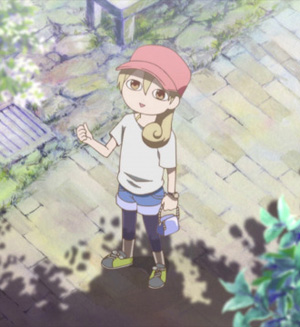 stop prior to mouthwatering.) What actually drives endearment is Wakako’s running inner monologue as voiced by Miyuki Sawashiro. Her narration of the tastes of the meal and the flavors of the beverages as well as the effects she feels from both usually start at deadpan, escalate dramatically to elation, and peak with a contented sigh of “Pshuuu.” These overexaggerations and variants thereon lend to a lot of chuckles evenly spread throughout each episode, but there is a darker humor subtly seasoning this predominantly lighthearted fare.
stop prior to mouthwatering.) What actually drives endearment is Wakako’s running inner monologue as voiced by Miyuki Sawashiro. Her narration of the tastes of the meal and the flavors of the beverages as well as the effects she feels from both usually start at deadpan, escalate dramatically to elation, and peak with a contented sigh of “Pshuuu.” These overexaggerations and variants thereon lend to a lot of chuckles evenly spread throughout each episode, but there is a darker humor subtly seasoning this predominantly lighthearted fare.
Wakako likes to eat and drink alone, because she’s winding down from social turbulence. Such instances as an exhausting day delivering presentations, taking blame for a subordinate’s ineptitude, and even just having a bad skin day drive Wakako into the softly waving, welcoming arms of curtained eateries. While such occasions serve as impetus, they do not override the indulgence. Worries often mellow or melt away whether from the meal and drink (and sometimes more drink) or casually overheard camaraderie from similarly minded patrons at the same establishment. There are, however, instances where something experienced while dining kills the mood and makes Wakako walk out, but these are relatively rare. To the contrary, there are also occurrences where Wakako recalls prior restrictions on eating that make her indulgences all the more entertaining as examples of rebellion through the simple act of ingestion with increased fervor.
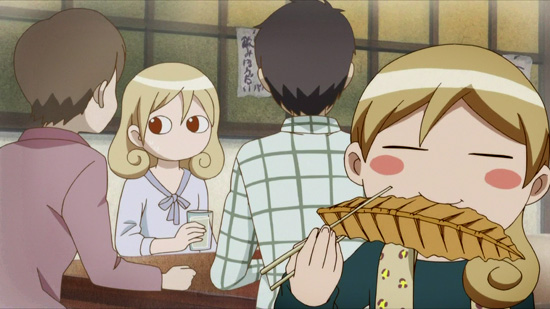
That said, the simplicity of each episode comes about through a lot of effort. Due to the delightfully transitory OP that has become my personal feel-good theme song, each episode only has one minute and 30 seconds to set up context for the meal, explain its intricacies, and depict Wakako’s reaction. Yet each and every episode does all of the above believably and with a lot more depth than expected. As superficial as that may sound, doing so is really an astounding feat considering the prolonged moments of Zen used to portray Wakako’s zoning in on the essence of her enjoyment. Timing in comedy is crucial, and Wakako-zake 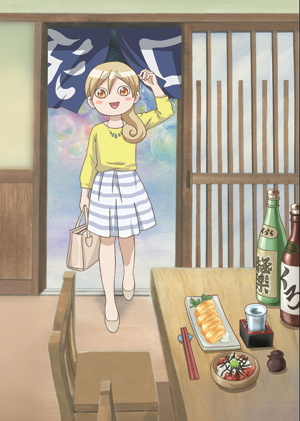 proves via skillful storyboarding that its brevity is, indeed, the soul of wit.
proves via skillful storyboarding that its brevity is, indeed, the soul of wit.
Among other aspects worth noting is Shinkyu’s unique character design for Wakako as adeptly adapted for the screen by Yoshishige Kosako. The spherical head may initially be a bit off-putting but quickly becomes an adorable oddity amongst a sea of flat faces. Also, the world of each izakaya, with different counter and wall textures and defining signage/ornamentation, is more detailed than expected. The same goes for the bevy of variations regarding Wakako’s relatively conserved physical reactions while eating and observing others eating.
Wakako-zake is medicine for the embittered soul. Hot soup on a cold winter’s day. Chilled wine in the haze of summer. If I said this anime was flawless, I’d not be exaggerating. (It’s flawless.) Watch it and find out just how quickly you start pshuuu-ing. Recommended.
Studio/company: Crunchyroll
Available: Now (Streaming)
Rating: NA


